M
I
C
R
O
S
T
O
R
Y
O
F
A
R
T
........................................................

NOW COMPLETED:

........................................................
MICROSTORY OF ART
ONLINE JOURNAL FOR ART, CONNOISSEURSHIP
AND CULTURAL JOURNALISM
........................................................
INDEX | PINBOARD | MICROSTORIES |
FEATURES | SPECIAL EDITIONS |
HISTORY AND THEORY OF ATTRIBUTION |
ETHNOGRAPHY OF CONNOISSEURSHIP |
SEARCH

........................................................



 >MICROSTORIES
>MICROSTORIES
- Richard Serra
- Martin Scorsese
- Claude Simon
- Sunshine
- Werner Herzog
- The Creation
- Marcel Duchamp
- Nino Rota
- Wölfflin and Woolf
- Hansjörg Schneider
- Kraftort Arkadien
- Visual Biography
- Schlaraffenleben
- Die Geisteswissenschaften
- The Voyeur
- Buzzword Sustainability
- Paul Verlaine
- Tao Yuanming
- New Beginning
- Seneca
- Still Lifes
- Charles Baudelaire
- Frédéric Chopin
- The Art History of Sustainability
- Wang Wei
- Solarpunk
- Historians of Light
- Lepanto
- Renaturalization
- Plates
- Snow in Provence
- Learning to See
- Picasso Dictionaries
- Peach Blossom Spring
- Picasso Tourism
- Tipping Points
- Sviatoslav Richter
- Weather Reports
- Treasure Hunt
- Another Snowscape in Picasso
- Picasso in 2023
- Dragon Veins
- The Gloomy Day
- The Art of the Pentimento
- Reforestation
- The Status of Painting
- Emergency Supply
- Punctuality
- Watching Traffic
- Zhong Kui
- How Painting Survived the 1990s
- Confirmation Bias
- Sustainability and Luxury
- Garage Bands
- Picasso and Artificial Intelligence
- Eyes of Tomorrow
- Picasso in 2023 2
- Gluing Oneself to Something
- Suburbia
- Bamboo
- Sustainability and Carpe Diem 1
- Interviews with Bruegel
- Sustainability and Carpe Diem 2
- Coffee & Sugar
- Bamboo 2
- Picasso in 2023 3
- Sustainability and Carpe Diem 3
- Cherry Orchard
- Old Magazines
- Chance
- Nick Drake
- Harlequin
- The Smartphone & the Art Book
- Atlas Syndrome
- The Kitchen
- Atlas Syndrome 2
- Consideration
- Tori Amos
- School
- Orchard Auctioning Day
- The Hundred Years’ War
- Sócrates
- Chameleon
- Nefertiti Bust
- Picasso as a Computer
- Sunflowers
- Philemon & Baucis
- Ode to the Radio
- Childhood
- Wimmelbild
- Restitution
- Nick Drake 2
- Wishful Thinking
- Sundays
- The Independent Scholar
- September
- The Fisherman by Pirosmani
- Microadventure
- Sociology
- Salvator Mundi
- Chillon
- Appassionata
- Amber
- Homer
- Berlin
- Planet Walk
- Improvisation
- Seeing Picasso
- These Nice Kids
- Robber
- The One
- The Sea Turtle
- Zoo
- Through the Hush
- Wunderkammer
- I Do Not Seek, I Find
- Shopping Mall
- Food Hamper
- The Secretary
- This Gate
- Nor Rainy Day
- House on a Hill
- Beautiful Island
- Second-hand Bookstore
- Flat
- Slap in the Face
- Serra, Wenkenpark
- Apologies
- The Bells
- Nordmann Fir
- Picasso Wanting To Be Poor
- Picasso, Pirosmani
- A Brief History of Sculpture
- 24 Sunsets
- Rusty Phoenix
- Glove
- Wintry Stanza
- A Song
- Like A Beatle
- Catching An Orange
- Solar Bees
- Permaculture

 >FEATURES
>FEATURES
- Van Gogh On Connoisseurship
- Two Museum’s Men
- Ende Pintrix and the City in Flames
- Titian, Leonardo and the Blue Hour
- The Man with the Golden Helmet: a documentation
- Un Jury d’admission à l’expertise
- Learning to See in Hitler’s Munich
- Leonardo da Vinci and Switzerland
- The Blue Hour Continued
- The Blue Hour in Louis Malle
- Kafka in the Blue Hour
- Blue Matisse
- Blue Hours of Hamburg and LA
- A Brief History of the Cranberry
- The Other Liberale in the House
- The Blue Hour in Raphael
- Who Did Invent the Blue Hour?
- Monet on Sustainability
- Velázquez and Sustainability
- The Blue Hour in Guillaume Apollinaire
- Van Gogh on Sustainability
- The Blue Hour in Marcel Proust
- Picasso and Sustainability
- The Contemporary Blue Hour
- The Blue Hour in 1492
- The Blue Hour in Hopper and Rothko
- Hopper and Sustainability
- The Blue Hour in Ecotopia
- The Hour Blue in Joan Mitchell
- Explaining the Twilight
- The Twilight of Thaw
- The Blue Hour in Pierre Bonnard
- Explaining the Twilight 2
- Picasso on Stalin
- Rubens on Sustainability
- The Salvator Mundi in Bruegel and Rubens
- The Blue Hour in Leonardo da Vinci and Poussin
- The Blue Hour in Rimbaud
- Faking the Dawn
- Frost and Thaw in Ilya Ehrenburg
- Picasso, Stalin, Beria
- Picasso, Solzhenitsyn and the Gulag
- Shostakovich on Picasso
- Hélène Parmelin in 1956
- Historians of Picasso Blue
- Picasso Travelling to Moscow 1
- The Blue Hour in Caravaggio
- Picasso Travelling to Moscow 2
- Picasso, the Knife Game and the Unsettling in Art
- Some Notes on Leonardo da Vinci and Slavery
- Picasso Moving to the Swiss Goldcoast
- The Blue Hour in Camus
- The Blue Hour in Symbolism and Surrealism
- Caspar David Friedrich in His Element
- Exhibiting the Northern Light
- Caspar David Friedrich in His Element 2
- Robert Schumann and the History of the Nocturne
- The Blue Hour in Robert Schumann
- Caspar David Friedrich and Sustainability
- The Twilight of Thaw 2
- Multicultural Twilight
- The Blue Hour in Anton Chekhov
- The Blue Hour in Medieval Art
- Twilight Photography
- The Blue Hour in Bob Dylan
- Iconography of Optimism

 >SPECIAL EDITIONS
>SPECIAL EDITIONS
- Visions of Cosmopolis
- Mona Lisa Landscapes
- Turner and Ruskin at Rheinfelden
- Painters On TV & On TV
- Spazzacamini in Art
- A Last Glance at Le Jardin de Daubigny
- The Experimental Cicerone
- A Dictionary of Imaginary Art Historical Works
- Iconography of Blogging
- Begegnung auf dem Münsterplatz
- Cecom
- Das Projekt Visual Apprenticeship
- Those Who See More
- A Fox on Seeing with the Heart
- Sammlung Werner Weisbach
- Daubigny Revisited
- Some Salvator Mundi Microstories
- Some Salvator Mundi Afterthougths
- Some Salvator Mundi Variations
- Some Salvator Mundi Revisions
- A Salvator Mundi Questionnaire
- A Salvator Mundi Puzzle
- Unknown Melzi
- Francis I and the Crown of Charlemagne
- From Amboise to Fontainebleau
- Drones Above Chambord
- Looking Back At Conques
- Flaubert At Fontainebleau
- Images of Imperial Ideology
- The Chronicles of Santa Maria delle Grazie
- Seeing Right Through Someone
- Melzi the Secretary
- Eying Glass
- A Foil to the Mona Lisa
- A Renaissance of the Cartoon
- Sketching a Family Tree
- Venetian Variations
- A Brief History of Digital Restoring
- A Consortium of Painters
- Leonardeschi and Landscape
- A Christ in Profile
- Learning to See in Spanish Milan
- A History of Gestures
- Leonardo and Josquin
- A Renaissance of the Hybrid
- Suida and Heydenreich
- The Watershed
- Three Veils
- From Beginning to End
- Connoisseurship of AI
- Twilight and Enlightenment
- The Blue Hour in Chinese Painting
- Dusk and Dawn at La Californie
- Iconography of Sustainability
- The Blue Hour in Goethe and Stendhal
- The Sky in Verlaine
- The Blue Hour in Paul Klee
- Iconography of Sustainability 2
- The Blue Hour in Charles Baudelaire
- From Bruegel to Solarpunk
- Some Salvator Mundi Documentaries
- Some More Salvator Mundi Monkey Business
- The Windsor Sleeve
- Brigitte Bardot’s Encounter with Picasso
- Art Historians and Historians
- A Salvator Mundi Chronicle
- The Salvator Mundi and the French Revolution
- The Fontainebleau Group
- The Encounter of Harry Truman with Pablo Picasso
- The Fontainebleau Group Continued
- The Windsor Sleeve Continued
- The Salvator Mundi in Early Netherlandish Painting 1
- Some Salvator Mundi Resources
- A New Salvator Mundi Questionnaire
- The Woman in Picasso
- The Yarborough Group
- Melzi, Figino and the Mona Lisa
- The Yarborough Group Continued
- A Salvator Mundi Global History
- The Salvator Mundi in Medieval Art
- The Salvator Mundi in Medieval Art 2
- The Salvator Mundi in Early Netherlandish Painting 2


 >HISTORY AND THEORY OF ATTRIBUTION
>HISTORY AND THEORY OF ATTRIBUTION
- The Mysterious »Donna Laura Minghetti-Leonardo«
- Assorted Demons of Connoisseurship
- Panofsky Meets Morelli
- Discovering the Eye of Sherlock Holmes
- Handling the Left-handed Hatchings Argument
- Visual History of Connoisseurship
- Alexander Perrig
- Connoisseurship in 2666
- What Postmodernity Has Done to Connoisseurship
- Dividing Four Fab Hands
- A Leonardesque Ambassador
- Test Cases in Connoisseurship
- A Raphael Expertise
- How to Tell Titian from Giorgione
- Louise Richter
- The Unique Property in the History of Connoisseurship
- An Expertise by Berenson
- The Book of Expertises
- An Album of Expertises
- An Expertise by Friedländer
- A Salvator Mundi Provenance
- How to Tell Leonardo from Luini
- An Expertise by Crowe and Cavalcaselle
- An Expertise by Bayersdorfer
- An Expertise by Hermann Voss
- An Expertise by Hofstede de Groot
- Leonardeschi Gold Rush
- An Unknown »Vermeer«
- An Expertise by Roberto Longhi
- An Expertise by Federico Zeri
- A Salvator Mundi Geography
- A Salvator Mundi Atlas
- The Bias of Superficiality
- 32 Ways of Looking at a Puzzle
- James Cahill versus Zhang Daqian
- Five Fallacies in Attribution
- On Why Art History Cannot Be Outsourced to Art Dealers
- On Why Artificial Intelligence Has No Place in Connoisseurship
- Salvator Mundi Scholarship in 2016
- Leonardo da Vinci at the Courts
- The Story of the Lost Axe
- The Last Bruegel
- A Titian Questionnaire
- On Where and Why the Salvator Mundi Authentication Did Fail
- The Problem of Deattribution

 >ETHNOGRAPHY OF CONNOISSEURSHIP
>ETHNOGRAPHY OF CONNOISSEURSHIP
MICROSTORY OF ART
ONLINE JOURNAL FOR ART, CONNOISSEURSHIP
AND CULTURAL JOURNALISM
........................................................

***
ARCHIVE AND FURTHER PROJECTS

1) PRINT


***
2) E-PRODUCTIONS


........................................................

........................................................

........................................................
FORTHCOMING:


***
3) VARIA

........................................................

........................................................

........................................................

........................................................

........................................................
***
THE GIOVANNI MORELLI MONOGRAPH

- The Giovanni Morelli Monograph
........................................................
MICROSTORY OF ART
ONLINE JOURNAL FOR ART, CONNOISSEURSHIP AND CULTURAL JOURNALISM
HOME
Mr Tommy Brue
Today Portrait XXI –
Mr Tommy Brue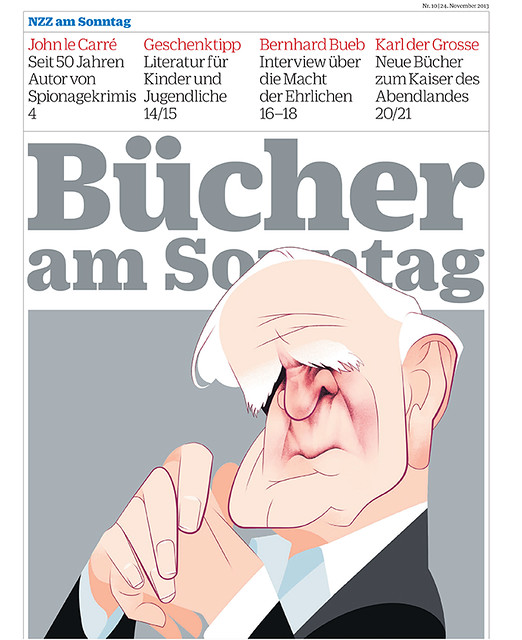
(Picture: nzz.ch/André Carrilho)

(Picture: telegraph.co.uk/A Most Wanted Man, with Tommy Brue played most convincingly by Willem Dafoe)
Mr Tommy Brue, a character from John le Carré’s 2008 novel A Most Wanted Man, is the writer’s portrait of a more or less disillusioned, but rather decent private banker, manipulated by the Secret Service. But not only that: it is also, as John le Carré declared himself (http://www.togohlis.de/03lecarre-interview.htm), kind of a self-portrait of him, the writer. Mr Tommy Brue, c’est moi, in one word. And with this Today Portrait we go into the third series of Today Portrait(s) that I am going to dedicate to portraits of bankers, entrepreneurs, the financial architecture, in brief: to the economy, since I am finding that art historians should turn more to a critical inspection of the economic system, of how it is represented in art, even so – or just because – the economy is rather a blind spot of the art system, since the art system, of course, despite or because its frequent critique of capitalism, is being part of it.
A Most Wanted Man (http://en.wikipedia.org/wiki/A_Most_Wanted_Man) does belong to the category of Post-9/11-novels, but a character like Tommy Brue is haunted also by the more distant past. The Pre-’89-past, or better: his father’s Pre-’89 and Shortly-after-’89 past as a money launderer for a Russian colonel. Tommy Brue, as a private banker, is left with a mess to clean up inside his bank. And since there is a mess to clean up (and he hasn’t yet done the cleaning up convincingly and to the full) the Secret Service sees his chance to manipulate Tommy Brue. As the Secret Service had once already manipulated the father of Tommy Brue (which is the reason, actually, why there is a mess to clean up, inside Brue Frères).
The novel, of course, does develop its characters much more fully than it does the 2014 movie, based on the 2008 novel. And in developing more complex characters, the novel shows Tommy Brue, the Scottish but now Hamburg-based banker, for example seeking comfort. And he does so, although he is not an actual art lover, by turning to art, by heading, again, to the Hamburg Ernst-Barlach-Haus (http://de.wikipedia.org/wiki/Ernst-Barlach-Haus), where he does find sculptures of characters (or human types) seeking also comfort, as it appears to him, but not finding such. Which is, as the novel, speaking from Tommy Brue’s own perspective, does declare, a sort of comfort in itself.

Ernst Barlach, Fries des Lauschenden (picture: Rufus46)
MICROSTORY OF ART
ONLINE JOURNAL FOR ART, CONNOISSEURSHIP AND CULTURAL JOURNALISM
HOME
Financial Architecture
Today Portrait XXII –
Financial Architecture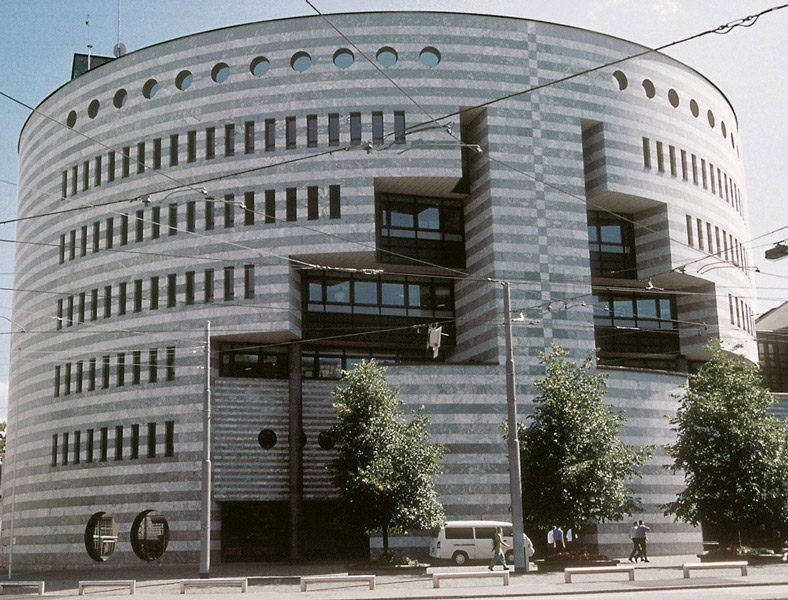
(Picture: bis.org)
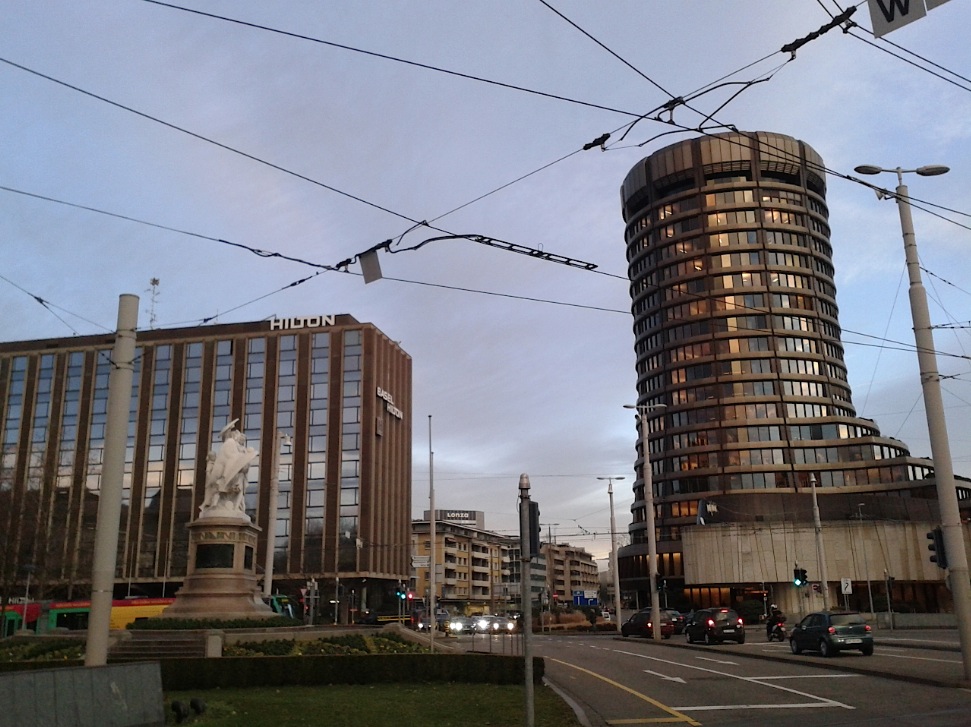
(Picture: DS)
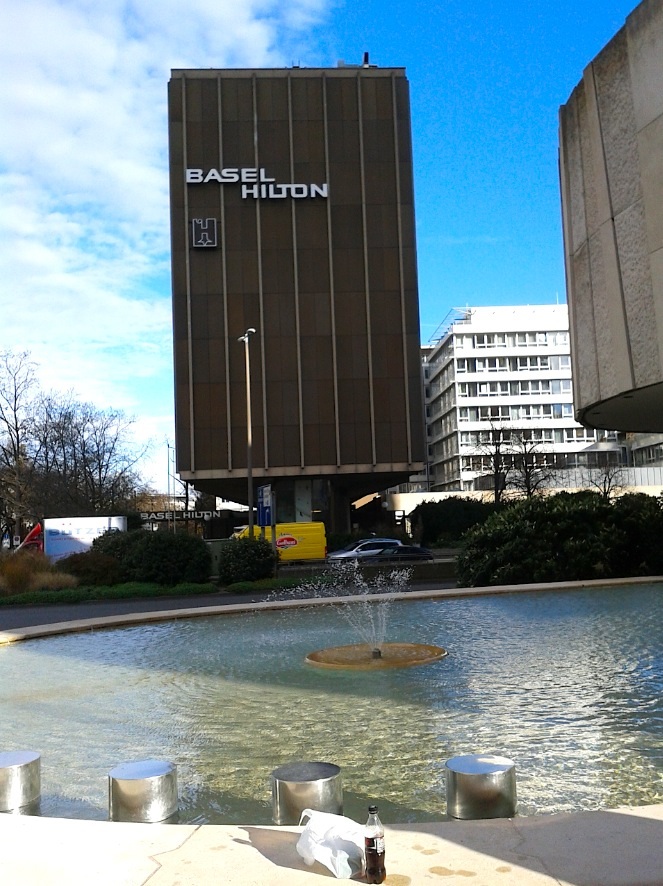
Occasionally there is such thing as a free lunch, at least here’s one I found – with a view to the
Hilton, and at the margin of the BIS entry fountain (picture: DS)
The days of the Basel Hilton Hotel building are counted. But this is not about the Hilton, nor about the new tower that is going to house the headquarters of an insurance company (see: http://bazonline.ch/basel/stadt/BaloiseHochhaus-erhaelt-gruenes-Licht/story/15975296), but about financial architecture, or, if one likes so: about a new environment for the Bank for International Settlements, the central bank of many central banks, but also an institution that the common man (like me) rather perceives as a black box, unaware of what the BIZ (or BIS) with its Basel headquarters (and two actual buildings; see on left and on right above) precisely does. Check it out here: http://www.bis.org/about/index.htm and here: http://de.wikipedia.org/wiki/Bank_f%C3%BCr_Internationalen_Zahlungsausgleich, and maybe you will see then architecture differently, because there is architecture, and there is the architecture of the international finance system, and the common man (like me) might ask now: what have this two levels of speaking of architecture actually in common? What is, in one word, financial architecture at all (or what should it be, if not to ask: what should it look like?).
MICROSTORY OF ART
ONLINE JOURNAL FOR ART, CONNOISSEURSHIP AND CULTURAL JOURNALISM
HOME
The Club of Grey Men
Today Portrait XXIII –
The Club of Grey Men
(Picture: clubmonaco.com)
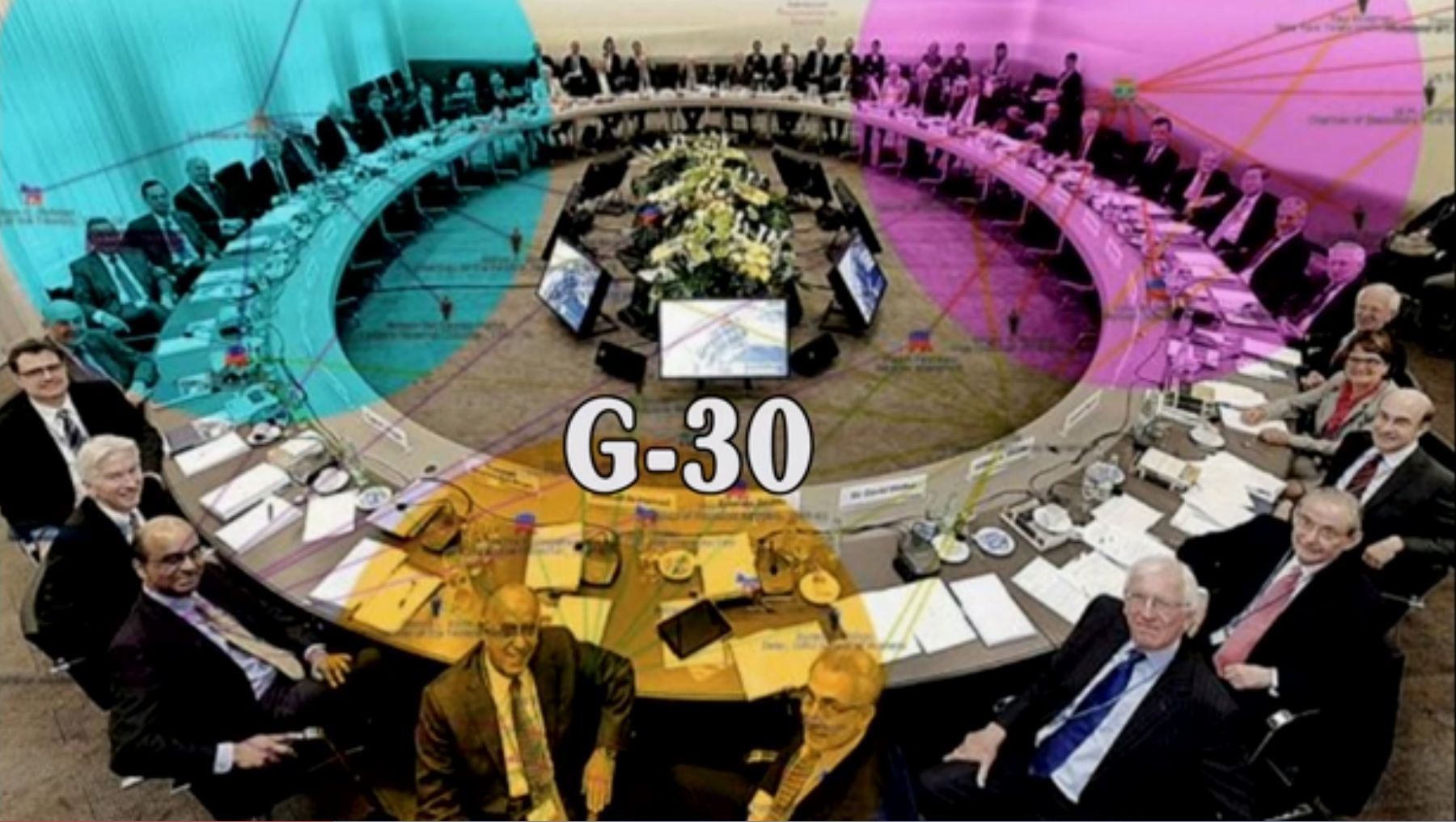
(Picture: Der Club der grauen Männer)
»Der Club der grauen Männer« – a short feature on the type of financial expert, working in international financial institutions like the World Bank or the IMF, the type of expert that the public usually does not get to see, but that does participate in defining when and under what condition a country does economically fail (and someone, some cluster of experts, here called the ›Club of Grey Men‹) has to define criteria what exactly is ›failing‹, and under what condition an international institution does help, and to what aim (watch here: http://www.dctp.tv/filme/der-club-der-grauen-maenner-10vor11-13102014).
MICROSTORY OF ART
ONLINE JOURNAL FOR ART, CONNOISSEURSHIP AND CULTURAL JOURNALISM
HOME
The System/The Symptom
Today Portrait XXIV –
The System/The Symptom
(Picture: artfacts.net ; Hanne Darboven
(not from the exhibition))

(Picture: kunstmuseumbasel.ch/Henrik Olesen: I do not go to work today. / I don’t think I go tomorrow)
»One Million Years – System und Symptom« – an excellent exhibition in the Basel Museum für Gegenwartskunst (http://www.kunstmuseumbasel.ch/de/ausstellungen/aktuell/one-million-years-system-und-symptom) with exquisitely chosen works of art and an intelligent intellectual approach. Only: If you really think seriously about what’s being presented, and about the relation between human neurosis and being forced into inhuman working conditions of today, what is one left to do? What is someone left to do, being confronted with as radical an artist as the late German conceptional artist Hanne Darboven (http://de.wikipedia.org/wiki/Hanne_Darboven) who visualizes the life time of a working woman or man, the time he or she might have spent in a factory with nothing else to do but doing some mechanical movements? It’s frightening, and yes, it is a luxury to be allowed to think about it. If art says: ›you must change your life‹, does art say also ›how‹?
MICROSTORY OF ART
ONLINE JOURNAL FOR ART, CONNOISSEURSHIP AND CULTURAL JOURNALISM
HOME
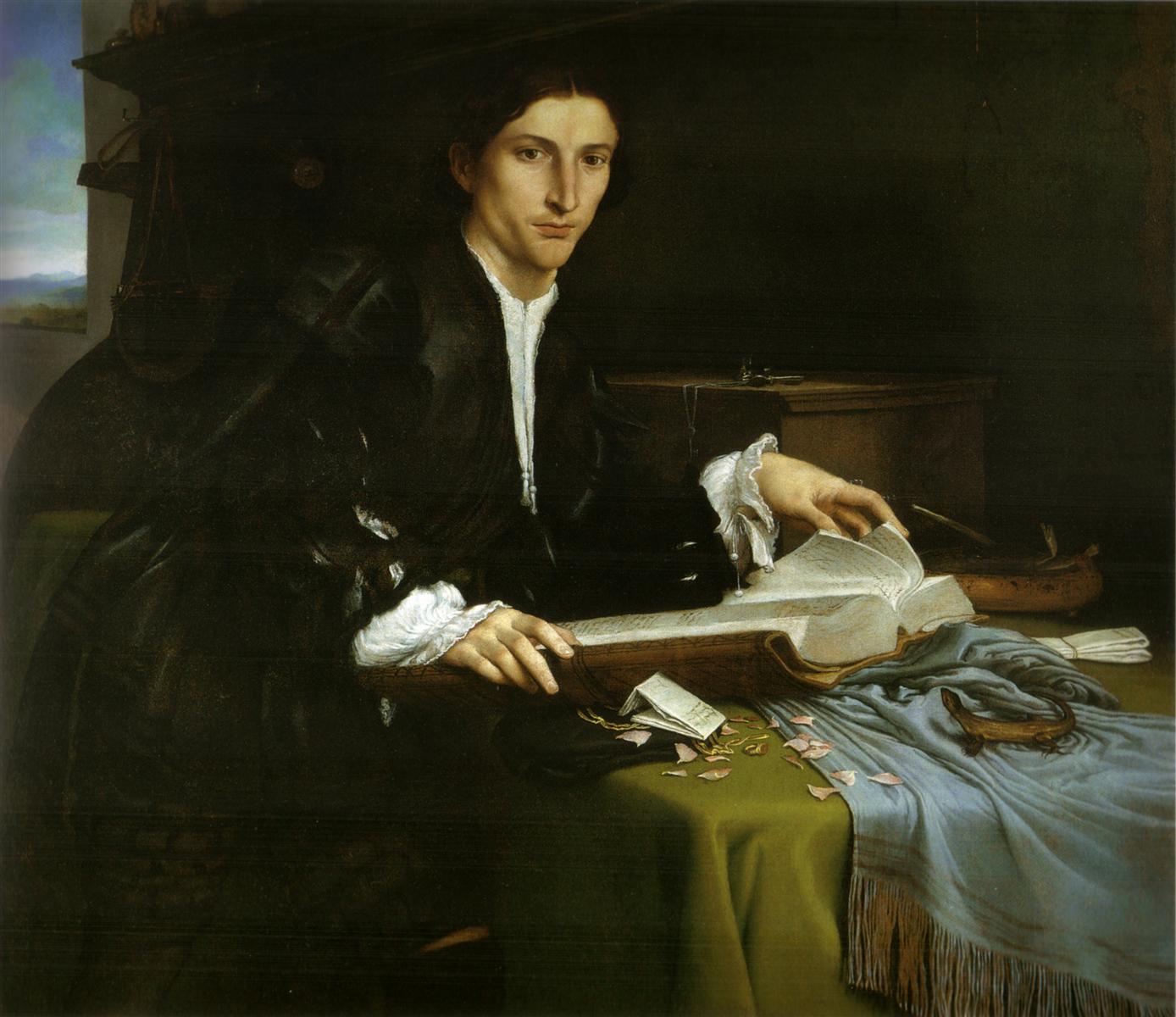
Giving up the dreams of one’s youth (love, hunting) for economic reasons? The Portrait of a Young Gentleman by Lorenzo Lotto, in his cave of melancholy
(and in the Accademia of Venice)

Jean-Léon Gérôme, The Tulip Folly (picture: 19thcenturyrealism.com)
The Angel of Efficiency
Today Portrait XXV –
The Angel of Efficiency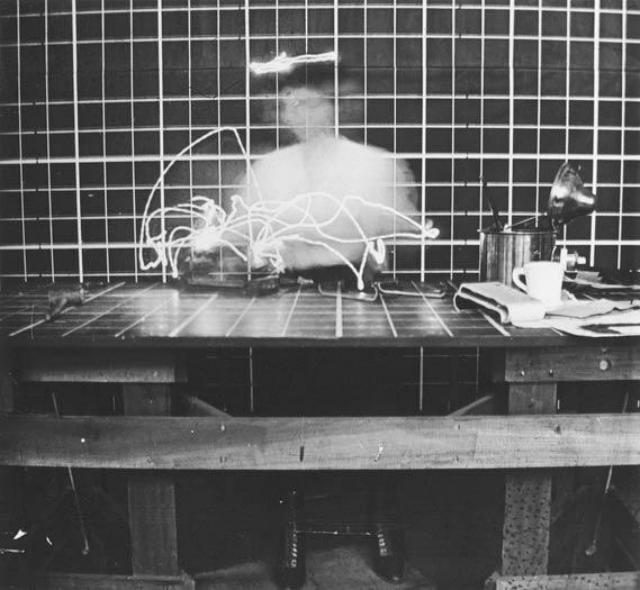
(Picture: tinesofwolfram.blogspot.com)

(Picture: slideteam.com)
The title ›Angel of Efficiency‹ does refer to an upcoming book by German scholar Florian Hoof, and also to Frank Bunker Gilbreth (1868-1924; http://en.wikipedia.org/wiki/Frank_Bunker_Gilbreth,_Sr.), the actual ›angel‹, whose photographic studies of worker’s movements while working (see picture above on left) have already inspired, here and there, curators and artists, and who does, according to the advertisement, figure prominently in Hoof’s monograph on the media history of corporate consulting. A book that, unlike the more anecdotal discussion of Gilbreth’s movement studies, traces back the actual history of Visual Management (see large picture above as well as the small picture on right below) to Gilbreth and his contemporaries (see: http://www.k-up.de/katalog/titel/978-3-86253-063-2.html).

(Picture: shmula.com)
MICROSTORY OF ART
ONLINE JOURNAL FOR ART, CONNOISSEURSHIP AND CULTURAL JOURNALISM
HOME
Peter Thiel
Today Portrait XXVI –
Peter Thiel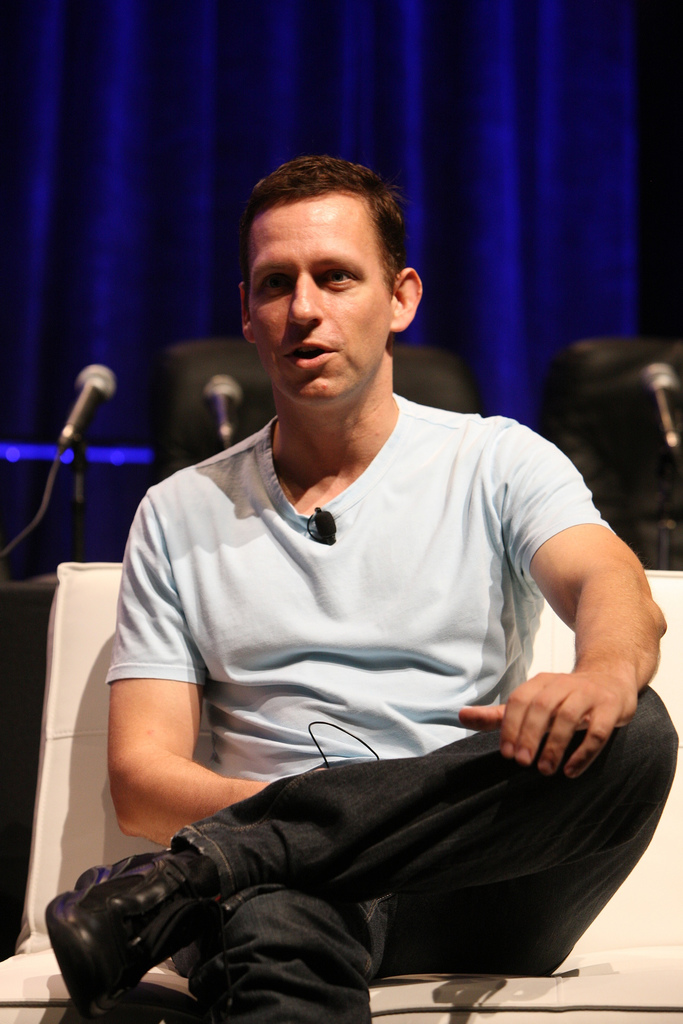
(Picture: TechCrunch50-2008)
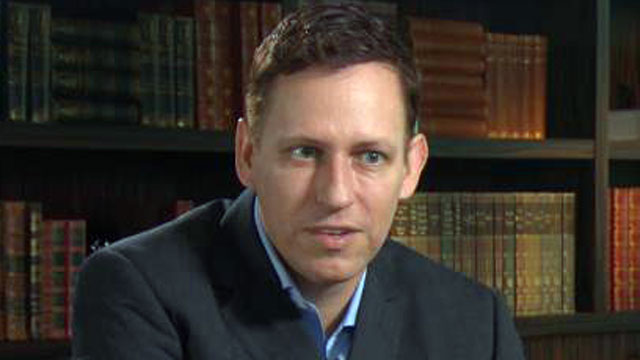
(Picture: abcnews.com)
Who is Peter Thiel (http://en.wikipedia.org/wiki/Peter_Thiel)? A venture capitalist, maybe the embodiment of risk capital, of smart investment. Some do portrait him as a ›cold heart‹, as the libertarian capitalist, some as being rather shy in personal encounter, all, as far as I can see without exception, as being very intelligent.
He has now come up with a book, and is dispersing the message that ›competition is for losers‹ (http://www.wsj.com/articles/peter-thiel-competition-is-for-losers-1410535536). And may economists discuss about the value of competition. What I find interesting about this message is that this may sound perfectly familiar to artists and artists-to-be: Do not compete, it’s about uniquely creative individuals who do not follow the main trends, the mainstream, but are, why not: inventurers. And their unique ideas do not need to compete, because unique ideas tend to create, at least in certain fields, monopolies. In other words: one does not chose to be an artist (or entrepreneur): those who do only compete are simply not (or at least not great ones); and either the unique, passion-driven individual’s idea does stand or not, and hopefully for the individual artist/entrepreneur/inventurer: in due time. Is Peter Thiel, the venture capitalist, by the way, also a patron to the arts (and are successful artists, today, nothing but entrepreneurs)?
MICROSTORY OF ART
ONLINE JOURNAL FOR ART, CONNOISSEURSHIP AND CULTURAL JOURNALISM
HOME
The Inventurer
Today Portrait XXVII –
The Inventurer
(Picture: Richardfabi)
(Picture: sailko)
Now a trick question to all venture capitalists: It might appear sometimes that all inventions of the modern age have already been anticipated by the one or other drawing by Leonardo da Vinci. The airbag was invented by Leonardo, one does read, or even the modern computer. And we may now assume that some inventions to come might also already have been anticipated by Leonardo.
Now the question to the venture capitalist: Which yet unrealized idea by Leonardo, which design would you pick to be realized? And one suggestion, if I may: What, for example, about his plan to uplift the Florence Baptistery (http://en.wikipedia.org/wiki/Florence_Baptistery), to put in on a new socket (my favourite passage in Vasari’s life of Leonardo, with Vasari reporting that Leonardo sounded quite convincing to his fellow citizens, but when, after Leonardo had left, they came to think about his plan, they all realized that it was actually impossible).
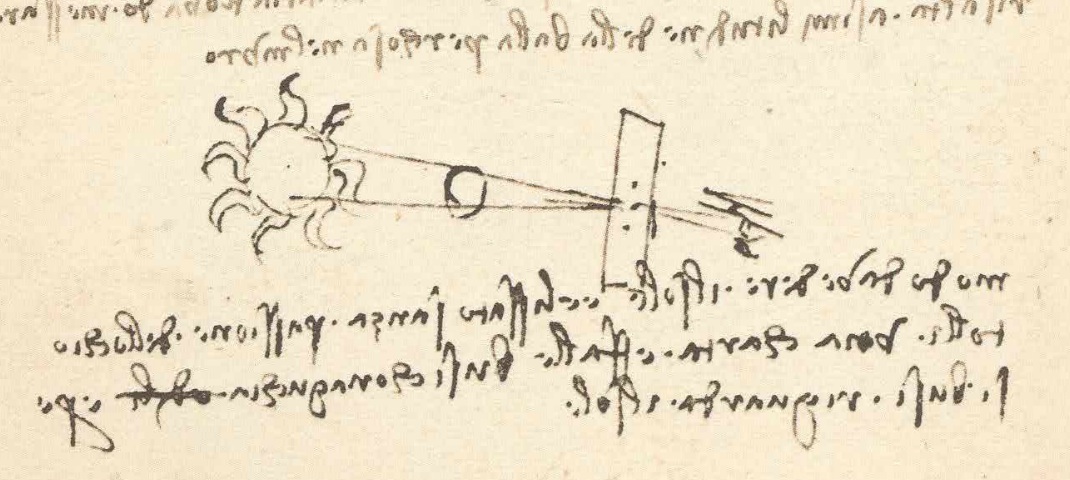
A method to allow one to look into the sun (source: leonardodigitale.com)
MICROSTORY OF ART
ONLINE JOURNAL FOR ART, CONNOISSEURSHIP AND CULTURAL JOURNALISM
HOME
Sustainability/Growth
Today Portrait XXVIII –
Sustainability/Growth
(Picture: thwink.org)
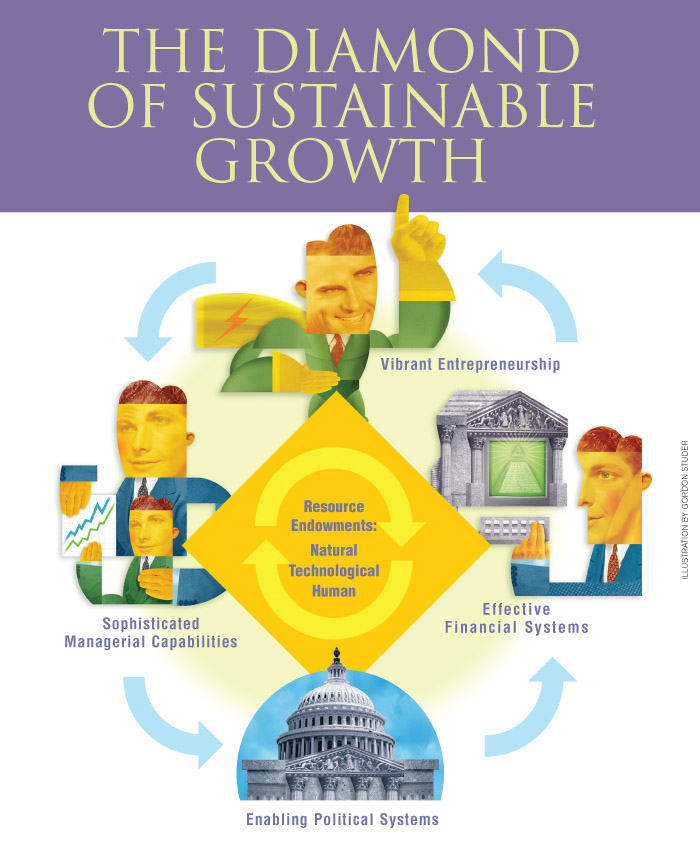
(Picture: w4.stern.nyu.edu)
While the discussion over ›sustainable development‹, quantitative or qualitative growth, zero-growth and so forth strikes me as being rather repetitive ever since, let’s say 1992, I am fascinated by the idea of writing a history of visual management, with a double focal point on Sustainability and Growth. It’s like the religious congregations of earlier days in history had artists commissioned to express their respective theological beliefs in pictures.

(Picture: Paul Sableman)
MICROSTORY OF ART
ONLINE JOURNAL FOR ART, CONNOISSEURSHIP AND CULTURAL JOURNALISM
HOME
Top Dogs/Slumdogs
Today Portrait XXIX –
Top Dogs/Slumdogs
(Picture: handelsblatt.com)

(Picture: Celador Films and Channel 4 Television Corporation)
A Top Dog, a top shot manager (see or read the 1996 play by Urs Widmer: http://de.wikipedia.org/wiki/Top_Dogs), has fallen, if a court is going to sell his seized watch on the internet (this happened to Thomas Middelhoff, this is not taken from the play, it was a Piaget: http://www.manager-magazin.de/finanzen/artikel/middelhoffs-piaget-nach-pfaendung-fuer-10-000-euro-versteigert-a-997826.html). If a writer had invented this kind of humiliation (or: depending on the view: ›feel-good‹) practice, probably no-one would have believed him.
MICROSTORY OF ART
ONLINE JOURNAL FOR ART, CONNOISSEURSHIP AND CULTURAL JOURNALISM
HOME
The Exchange Rate
Today Portrait XXX –
The Exchange Rate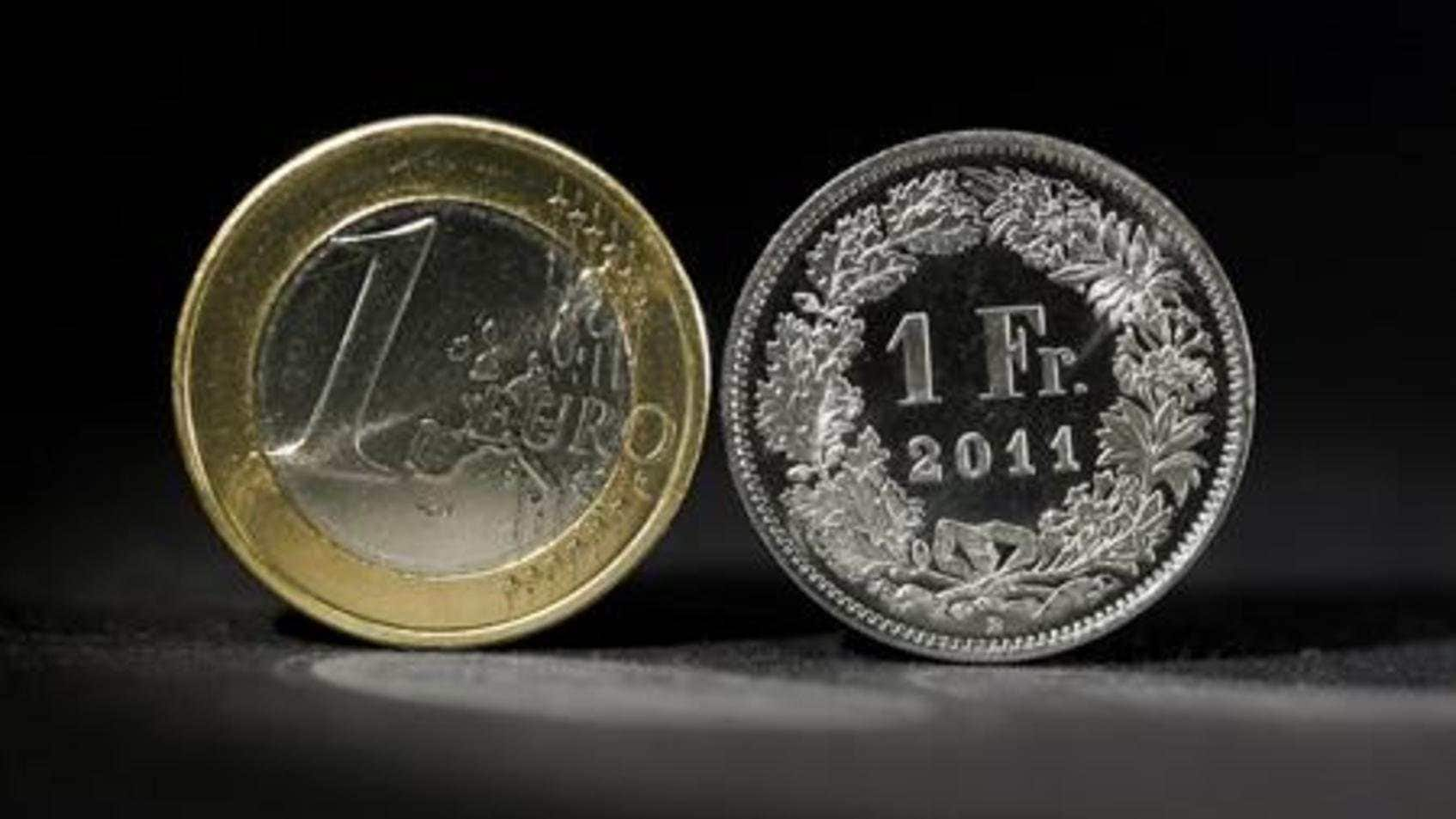
(Picture: handelszeitung.ch)
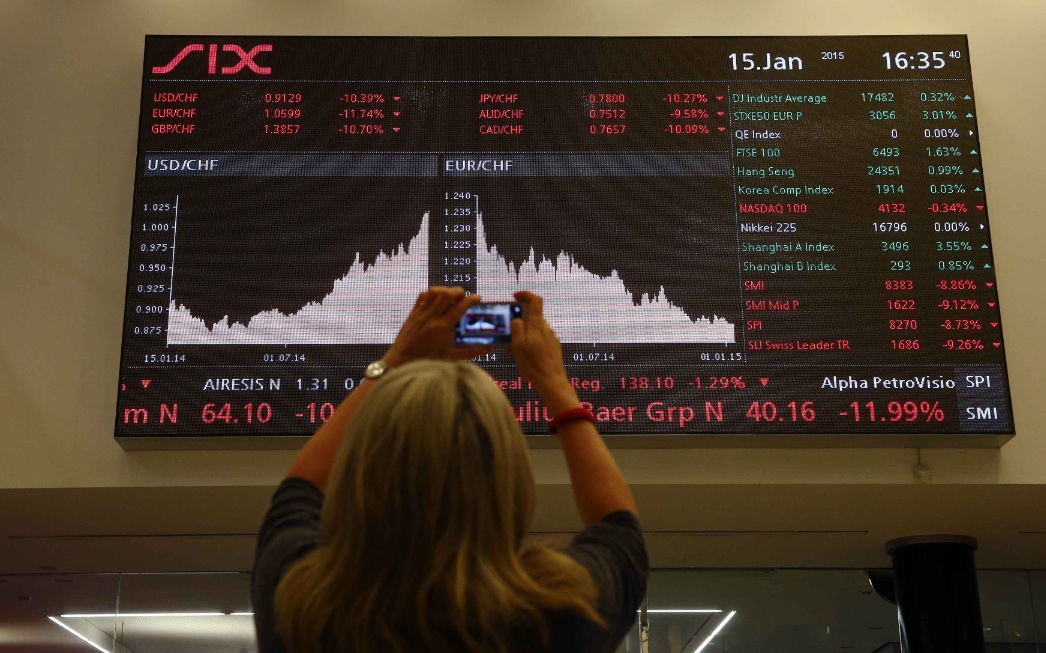
(Picture: tageswoche.ch)
Without words (or: ›today painting‹ as of January 15; do, by the way, check the daily painting here: http://www.finanzen.ch/devisen/eurokurs).
MICROSTORY OF ART
ONLINE JOURNAL FOR ART, CONNOISSEURSHIP AND CULTURAL JOURNALISM
HOME
© DS